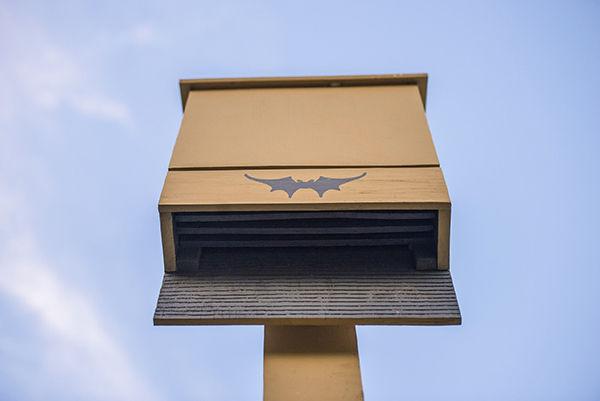When completed, Kyle Field’s renovation will seat 102,500 screaming football fans as the largest stadium in the SEC. However, the renovated stadium will no longer welcome some of Kyle Field’s quieter inhabitants — 250,000 Mexican free-tailed bats.
The native bat population has lived in the crevices of Kyle Field since it was built 87 years ago. Texas A&M and Manhattan-Vaughn have sought to relocate the bat population since the stadium’s renovation began in the fall of 2013.
Cleaning up after the bats costs A&M approximately $150,000 per year, said Phillip Ray, chief business development officer of Texas A&M.
“The total cost to undertake bat-exclusion measures throughout the redeveloped Kyle Field is not yet determined,” Ray said.
While university officials question the cost of cleanup, some conservationists question the environmental costs of getting rid of the bats.
Thomas Lacher, a bat expert and conservation biologist in the Department of Wildlife and Fisheries Sciences, said the bat exodus from Kyle Field may kill some of the bats and force those remaining into other campus buildings.
“Any bats that cannot find a suitable roosting site that provides the right thermal conditions will likely die,” Lacher said. “I expect a significant number will be looking for spots near Kyle [Field] and those will be campus buildings.”
Early removal efforts in 2013 resulted in the infestation of 1,000 bats in Cain Hall, right across from Kyle Field. The university responded by sealing potential entry points and building bat houses around campus to relocate the population. To some critics, these steps are not enough.
Lacher said it often takes several years for bats to become accustomed to new roosts.
“A lot will depend upon the design of the bat houses and how easy they are for the bats to find,” Lacher said.
Conservationists are concerned what the reduced bat population might mean for the surrounding area. Shelby Vega, president of the TexasA&M chapter of the Society for Conservation Biology and wildlife and fisheries sciences senior, expressed concerns for undesired effects.
“All bats do good for people as far as insect control and it is important to remember that,” Vega said.
Lacher said the impact on the insect population would be significant if the relocation process fails to protect the bats.
“The 250,000 bats in Kyle Field were consuming from 50 to 150 million insects each night,” Lacher said. “Many of these are agricultural pests, so that could be a significant loss of free control of crop damage.”
Vega said Texas A&M should look for a way to better coexist with the bats.
“If they could figure out a way to collect their waste they could have a very sustainable source of fertilizer,” Vega said. “Bat guano is very high in nitrogen and makes an excellent fertilizer.”
Whether the preventative and relocation efforts are successful will only be known when the bats migrate back to College Station from Mexico in the spring. In the meantime, Ray said the removal will continue.
A&M works to relocate Kyle Field bat population
February 2, 2015

Tanner Garza — THE BATTALION
As part of the bat relocation efforts, “bat houses” have been built in order to conserve the free-tailed bat population as they are forced from Kyle Field.
Donate to The Battalion
Your donation will support the student journalists of Texas A&M University - College Station. Your contribution will allow us to purchase equipment and cover our annual website hosting costs.



















